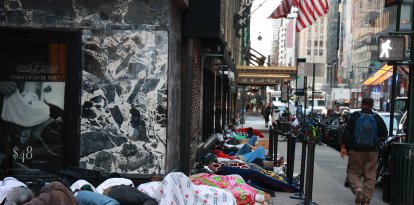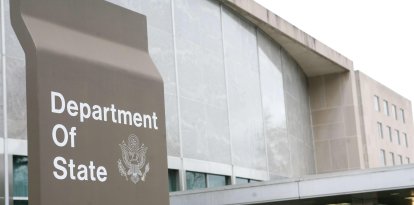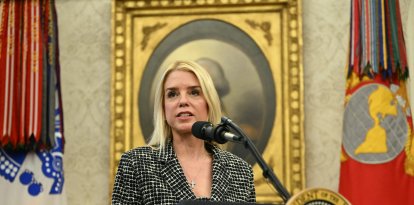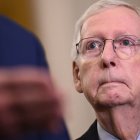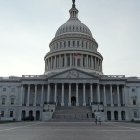Senate Democrats formulate their own proposal to avoid a government shutdown
This was announced by Chuck Schumer after Mike Johnson failed to unite his Republican colleagues in the House of Representatives.

Schumer decided to act after the failure of the last Republican proposal in the House/ Mandel Ngan.
Democrats in the Senate are moving forward with their own proposal to avoid a government shutdown. This was announced by Chuck Schumer after Republicans in the House of Representatives failed to agree on a common budget. According to the majority leader, he will seek consensus with Mike Johnson on a bill that is able to pass both chambers.
last Wednesday the House speaker saw his attempt thwarted when fourteen Republicans joined the Democrats to defeat his initiative. "We have time to fix the situation, and we’ll get right to it. I’m disappointed. I know this was the right thing to do, and I think the American people are gonna let a lot of the folks that voted no tonight hear their concerns about it," he said after the vote.
Against this backdrop, Schumer decided to move to action and launch a new proposal from the Senate, even though usually the Appropriations Act (which funds the government) comes out of the House.
"Later today, I’ll file cloture on a legislative vehicle that will enable us to prevent a Trump shutdown in the event that the Speaker does not work with us in a bipartisan, bicameral manner. Both sides are going to spend the next few days trying to figure out the best path remaining for keeping the government open," the Democrat said.
"By filing today, I’m giving the Senate maximum flexibility for preventing a shutdown. Democrats and Americans don’t want a Trump shutdown. I dare say most Republicans, at least in this chamber, don’t want to see a Trump shutdown," he added.
Congress must pass legislation by Sept. 30 to avoid what would be the first shutdown since 2019, when Donald Trump failed to reach a deal with Democrats to add funding for border wall construction.
Senate Republicans were impatient with Johnson, who failed to unite all of his Republican colleagues. Specifically, the proposal that was defeated combined a six-month Continuing Resolution (CR) with the Save American Voter Eligibility Protection (SAVE) Act. Such legislation would require proof of citizenship for voter registration.
The CR is a stopgap funding bill and is often used as a way to buy a little more time for lawmakers to craft a final funding proposal.
As for Trump, he already stated that he prefers the Government Shutdown option if the SAVE Act does not pass. "If Republicans in the House, and in the Senate, do not get absolute assurances on Election Security, they SHOULD NOT, IN ANY WAY, SHAPE OR MANNER, MOVE FORWARD WITH A CONTINUING BUDGET RESOLUTION," he recently wrote on Truth Social.
What is the government shutdown and what are its consequences?
The United States decides how to spend public money year after year when Congress passes what is called the Appropriations Bill. Lawmakers have to agree by October 1. If there is no act passed by that point, the federal government shuts down.
The logic comes from the National Constitution, specifically Article 1, Section 9: "No money shall be drawn from the treasury, but in consequence of appropriations made by law; and a regular statement and account of the receipts and expenditures of all public money shall be published from time to time."
Once closure is reached, certain agencies directly cease to function. They may be all, some or one in particular. Their employees cannot work and their pay is withheld until lawmakers on Capitol Hill agree.
The United States was completely unfamiliar with this kind of situation until well into the 20th century, when in 1980 the first government shutdown took place. Jimmy Carter was the first president to be in charge during this situation, which the government shutdown for a little over 24 hours. Shutdowns happened in 1982 (twice), 1983, 1984 (twice), 1986, 1987, 1990, 1995 (twice), 2013, 2018 and 2019.
Counting the 1980 one, on the first five occasions, Democrats controlled the House of Representatives, which is usually in charge of pushing through the Appropriations Act. Ronald Reagan was the president when the government shutdown a record number of times, eight shutdowns between 1981 and 1989.
The last one, coincidentally the longest, was in 2019, when it took 35 days for everything to return to normal operations. It is estimated that 800,000 public employees did not receive their money during that period of time.
One of the most remembered scenes of that shutdown occurred when Donald Trump, then president, had to host the Clemson University soccer team, who had recently won the College Football National Championship. Since the White House employees were unable to work, including the kitchen, the president pulled out his wallet and bought food from McDonald's, Wendy's and Burger King. "If it's American, I like it. Everything is American. No matter what we did, there's nothing you can have that's better than that, right?", the Republican remarked at the time.
RECOMMENDATION
